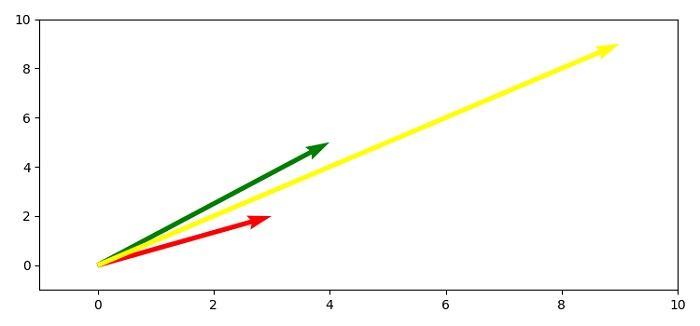
 Data Structure
Data Structure Networking
Networking RDBMS
RDBMS Operating System
Operating System Java
Java MS Excel
MS Excel iOS
iOS HTML
HTML CSS
CSS Android
Android Python
Python C Programming
C Programming C++
C++ C#
C# MongoDB
MongoDB MySQL
MySQL Javascript
Javascript PHP
PHP
- Selected Reading
- UPSC IAS Exams Notes
- Developer's Best Practices
- Questions and Answers
- Effective Resume Writing
- HR Interview Questions
- Computer Glossary
- Who is Who
How does Python's Matplotlib.pyplot.quiver exactly work?
To work with quiver, we can take the following steps −
Set the figure size and adjust the padding between and around the subplots.
Create vector cordinates using numpy array.
Get x, y, u and v data points.
Create a new figure or activate an existing figure using figure() method.
Get the current axis using gca() method.
Set x and y limit of the axes.
To redraw the current figure, use draw() method.
To display the figure, use show() method.
Example
import numpy as np import matplotlib.pyplot as plt plt.rcParams["figure.figsize"] = [7.50, 3.50] plt.rcParams["figure.autolayout"] = True soa = np.array([[0, 0, 3, 2], [0, 0, 4, 5], [0, 0, 9, 9]]) X, Y, U, V = zip(*soa) plt.figure() ax = plt.gca() ax.quiver(X, Y, U, V, angles='xy', scale_units='xy', scale=1, color=['red', 'green', 'yellow']) ax.set_xlim([-1, 10]) ax.set_ylim([-1, 10]) plt.draw() plt.show()
Output


Advertisements
